Texas Solar Incentives: A 2023 Guide
The popularity of solar energy in Texas is skyrocketing, and whether you’re a homeowner or a business owner, understanding and leveraging solar incentives is the key to slashing energy costs while contributing to a cleaner environment.
Understanding solar energy in Texas
Solar energy is all about harnessing the power of sunlight and converting it into electricity. Solar panels, often installed on rooftops or in open spaces, capture sunlight through photovoltaic cells and transform it into electricity.
The average residential utility customer in the U.S. uses around 10,694 kilowatt-hour (kWh) per year and could save up to $1,390.22 per year in energy costs by installing a properly sized solar panel system.
Texas solar incentives explained
When it comes to solar installations, there are some financial perks that can brighten your day.
The Federal Investment Tax Credit (ITC) lets you deduct a significant portion of the cost of solar panels from your federal taxes.
Some states, including Texas, offer property tax exemptions for solar installations, which means you won’t have to pay more tax because of those shiny solar panels. On top of that, there are statewide and local solar rebate programs that offer cash incentive programs or discounts on solar installations.
Net metering is a fantastic way for Texas solar panel owners to maximize the benefits of their solar systems. Essentially, when your solar panels produce more electricity than you use, the excess is sent back to the grid, and you earn energy credits on your utility bill.
Solar buyback programs work by allowing solar panel owners to sell the excess energy they generate back to the utility company. Here’s how it works: when your solar panels produce more electricity than your home or business needs, the surplus energy is fed back into the grid. The utility company, such as AEP, then purchases this excess electricity from you at a predetermined rate.
Navigating Texas solar rebates
There are many different solar rebates offered in Texas, depending on your provider. Some rebates include:
Austin Energy offers a $2,500 rebate as long as you complete their solar education course and install a qualifying solar photovoltaic (PV) system in your home that meets their standards.
CPS Energy has solar rebates for small businesses, schools, and non-profits.
Their rebate system operates by offering $0.60 per AC Watt for the first 25kW, $0.40 per AC Watt for kW over 25, and $0.10 per AC Watt premium for projects utilizing local modules.
For residential solar systems, CPS Energy offers a rebate of $0.60 per watt, which means if your 5kW installation costs you $20,000, you would get a $3,000 rebate.
To qualify for Oncor’s rebate, you must use them as your electric delivery provider. Their rebate only applies to homeowners with homes that are not new construction projects.
The eligibility for residential solar photovoltaic incentives hinges on various factors, such as the dimensions and orientation of your installed system. To be eligible for these incentives, homeowners will need to equip their solar photovoltaic systems with an energy storage backup system.
In order to qualify, the solar photovoltaic system must adhere to specific criteria, including a minimum system size of 3 kW DC and a maximum system size of 15 kW DC.
SMTX Utilities Distributed Generation Rebate Program:
To qualify for the rebate, you must own the property, be the utility customer with 12+ months of usage history, and meet energy efficiency criteria for single-family homes. The rebate is for 1 kW to 100% of annual usage, offering $1/watt, maxing at $2,500 for residential customers and $5,000 for commercial customers. Pre-approval is required. Open to existing SMTXU utility customers in good standing. The rebate can’t exceed 50% of the installation cost.
Solar panel installation costs
The installation of solar panels involves several costs, including the upfront expense of purchasing and installing the solar system, which can vary based on the system’s size and complexity, ranging from $17,000 to around $24,000.
There are various financial incentives available to help reduce these costs. These incentives often include federal and state tax credits, rebates from local utility companies, and solar renewable energy certificates (SRECs) in some areas, all of which can significantly offset the initial investment.
Financing options such as solar loans, power purchase agreements (PPAs), and solar leases make it more accessible for homeowners to go solar with little to no upfront costs, allowing them to pay for their solar systems over time through manageable monthly payments.
These financing options, along with the financial incentives mentioned, can make solar installations a financially viable and environmentally beneficial choice for many homeowners and businesses.
The financial benefits of Texas solar incentives
Solar installations can have a positive impact on property value and home equity.
Additionally, solar power systems lead to reduced energy bills by generating clean electricity from the sun, thereby lowering or eliminating the need for electricity from the grid.
Excess solar energy production can even result in bill credits through net metering programs, where surplus energy is fed back into the grid. Homeowners can also benefit from federal tax incentives like the Federal Solar Investment Tax Credit, which can cover a significant portion of the installation costs and potential income tax benefits from depreciation and solar-related deductions.
Overall, the return on investment (ROI) for solar panel systems is often impressive, as homeowners can see savings on energy bills and potential financial gains from increased property value and tax incentives, making solar installations a smart long-term financial decision while contributing to environmental sustainability.
Overcoming challenges
Switching to solar energy can come with challenges, particularly when dealing with homeowner’s associations (HOAs) that may have restrictions on the appearance of solar panels.
Some states have laws that protect a homeowner’s right to install solar panels despite HOA restrictions. In fact, according to the Texas Property Code, HOAs can’t prohibit or restrict a property owner from installing a solar energy device in Texas.
Additionally, cooperating with local governments and utility companies can help streamline the permitting process and access available incentives and rebates, making the transition to solar energy more efficient and cost-effective. Collaboration with these stakeholders is key to addressing potential roadblocks and ensuring a smoother transition to renewable energy systems.
Solar companies in Texas
Reputable solar installation companies available to Texans include:
- SunPower. Known for high-efficiency solar panels and comprehensive warranty options.
- Vivint Solar. Provides solar panel installations with a focus on smart home integration.
- Green Mountain Energy. The first energy company dedicated to clean energy in Texas. They specialize in renewable energy installations, including solar.
When selecting the right solar provider in Texas or any other location, consider the following:
- Reputation
- Experience
- Certifications
- Warranty
Payless Power offers energy plans powered by renewable energy sources, including wind and solar power. Customers interested in renewable energy can explore Payless Power’s green energy options to support sustainable energy sources while meeting their electricity needs.
Looking ahead
Future trends and developments in Texas solar incentives are likely to be influenced by several factors, including:
- Federal policies. The federal government plays a crucial role in promoting renewable energy, including solar power. Under the Inflation Reduction Act, Investment Tax Credit (ITC), those who install a PV system between 2022 and 2032 will receive an increased 30% tax credit.
- State policies. The Lone Star State has seen significant growth in its solar industry, and state-level policies will continue to shape the landscape in the future.
- Technological advancements. As solar technology advances and becomes more cost-effective and efficient, it will likely drive greater adoption.
- Environmental awareness. Growing awareness of climate change and the need for clean energy sources could lead to increased demand for solar power in Texas. Consumers and businesses may seek to reduce their carbon footprint by investing in renewable energy.
Harnessing sunshine for a brighter Texas tomorrow
Texas solar incentives offer numerous benefits to residents and businesses. These incentives include tax credits, rebates, and programs from local utilities, making solar energy more affordable and accessible.
By going solar, you can reduce your electricity bills, increase your property value, and contribute to a cleaner environment. Embracing solar power not only saves you money but also supports a sustainable energy future for Texas, whether you’re in Dallas, San Antonio, or beyond.
Join the movement towards a greener Texas by exploring solar energy options today. And if you’re looking for an energy provider committed to renewables, consider signing up with Payless Power. A portion of their energy plans is powered by solar, helping you reduce your carbon footprint while enjoying reliable electricity. Make a positive impact on both your wallet and the planet — choose Payless Power!
What our customers are saying
See why our power customers say we're the best electricity provider in Texas!
I was worried about getting electricity for my home through a prepaid company. I was calling around to see different rates then going through all the hassle of credit checks while dropping points each…
I have been with this company for several years and have been very happy since. Even when I moved, they made my usually stressful situation very easy and carefree. I recommend them to everyone that I…
I have enjoyed the service for 2 years now. In the beginning this service was planned to be temporary but with the service being so effective for me i decided to keep it for the long haul. I’m a happy customer.






